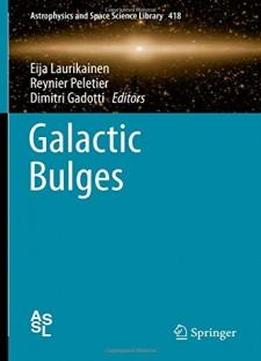
Galactic Bulges (astrophysics And Space Science Library)
by Eija Laurikainen /
2015 / English / PDF
13.1 MB Download
This book consists of invited reviews on Galactic Bulges written by
experts in the field. A central point of the book is that, while in
the standard picture of galaxy formation a significant amount of
the baryonic mass is expected to reside in classical bulges, the
question what is the fraction of galaxies with no classical bulges
in the local Universe has remained open. The most spectacular
example of a galaxy with no significant classical bulge is the
Milky Way. The reviews of this book attempt to clarify the role of
the various types of bulges during the mass build-up of galaxies,
based on morphology, kinematics and stellar populations and
connecting their properties at low and high redshifts. The observed
properties are compared with the predictions of the theoretical
models, accounting for the many physical processes leading to the
central mass concentration and their destruction in galaxies. This
book serves as an entry point for PhD students and non-specialists
and as a reference work for researchers in the field.
This book consists of invited reviews on Galactic Bulges written by
experts in the field. A central point of the book is that, while in
the standard picture of galaxy formation a significant amount of
the baryonic mass is expected to reside in classical bulges, the
question what is the fraction of galaxies with no classical bulges
in the local Universe has remained open. The most spectacular
example of a galaxy with no significant classical bulge is the
Milky Way. The reviews of this book attempt to clarify the role of
the various types of bulges during the mass build-up of galaxies,
based on morphology, kinematics and stellar populations and
connecting their properties at low and high redshifts. The observed
properties are compared with the predictions of the theoretical
models, accounting for the many physical processes leading to the
central mass concentration and their destruction in galaxies. This
book serves as an entry point for PhD students and non-specialists
and as a reference work for researchers in the field.











